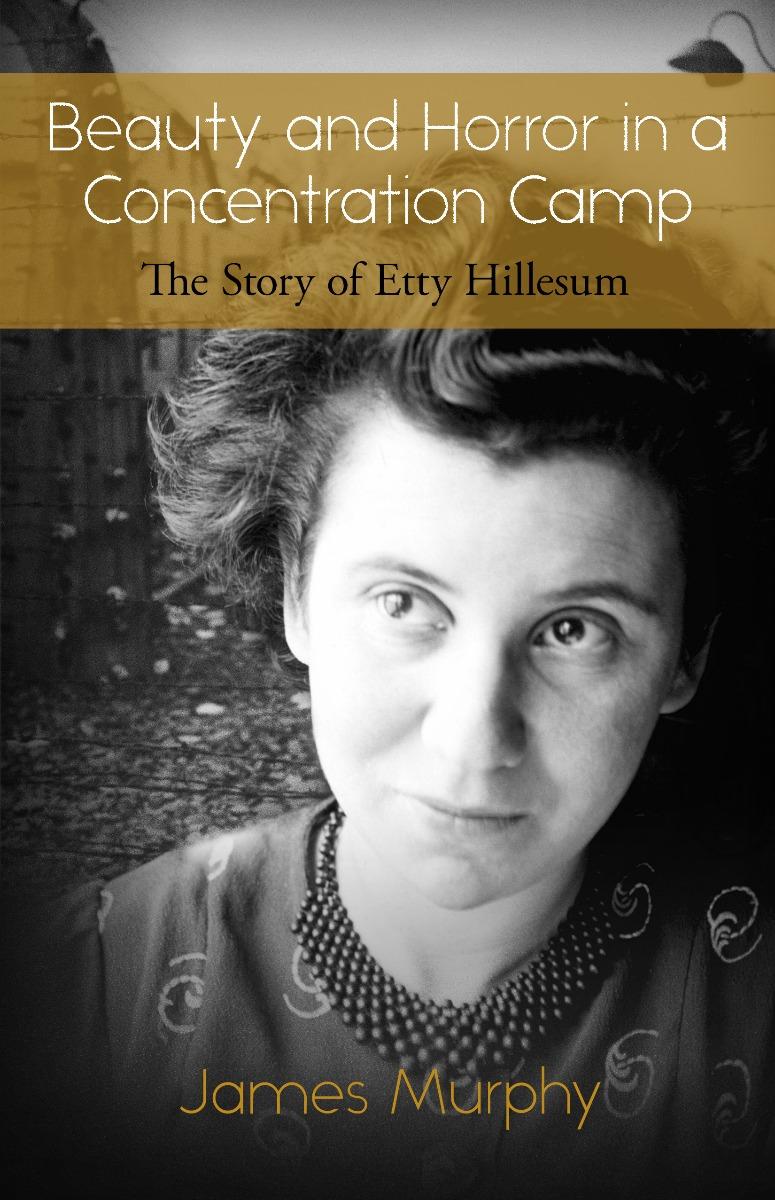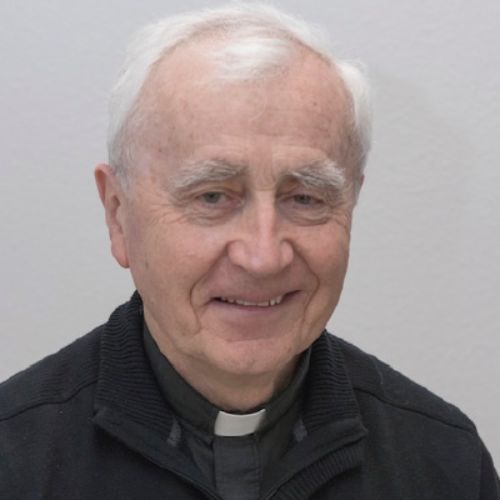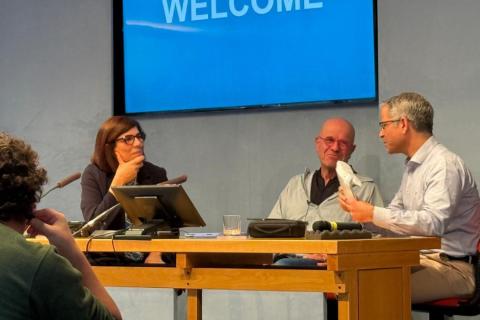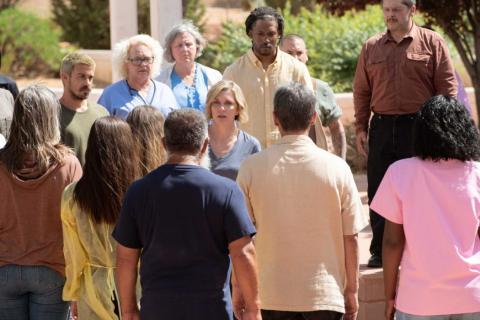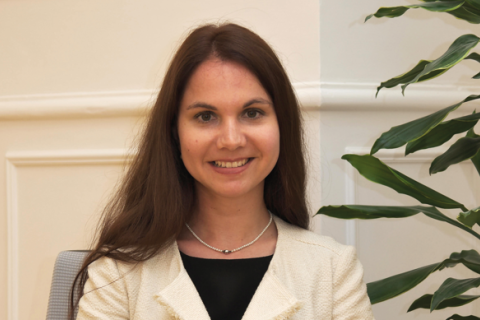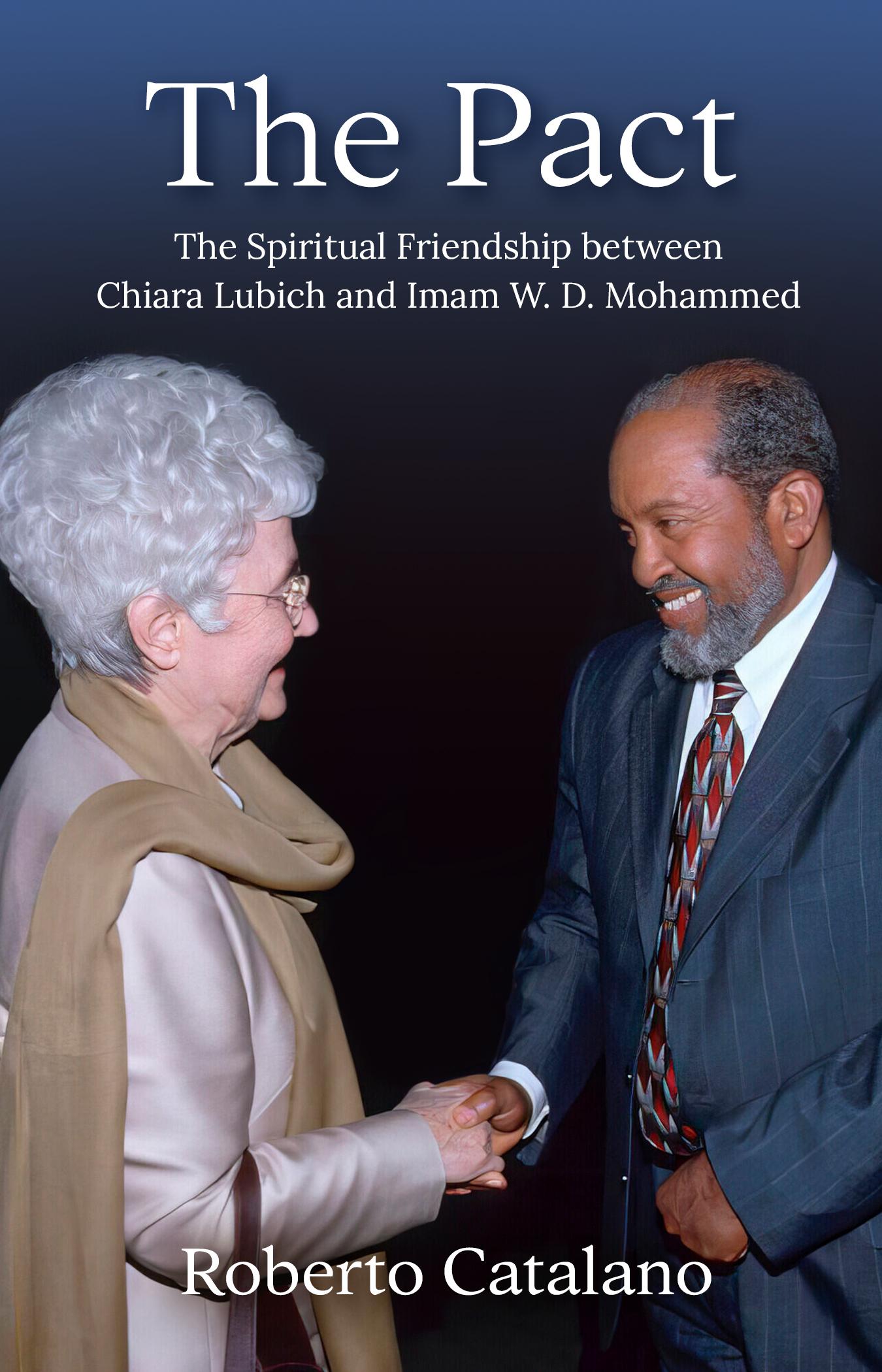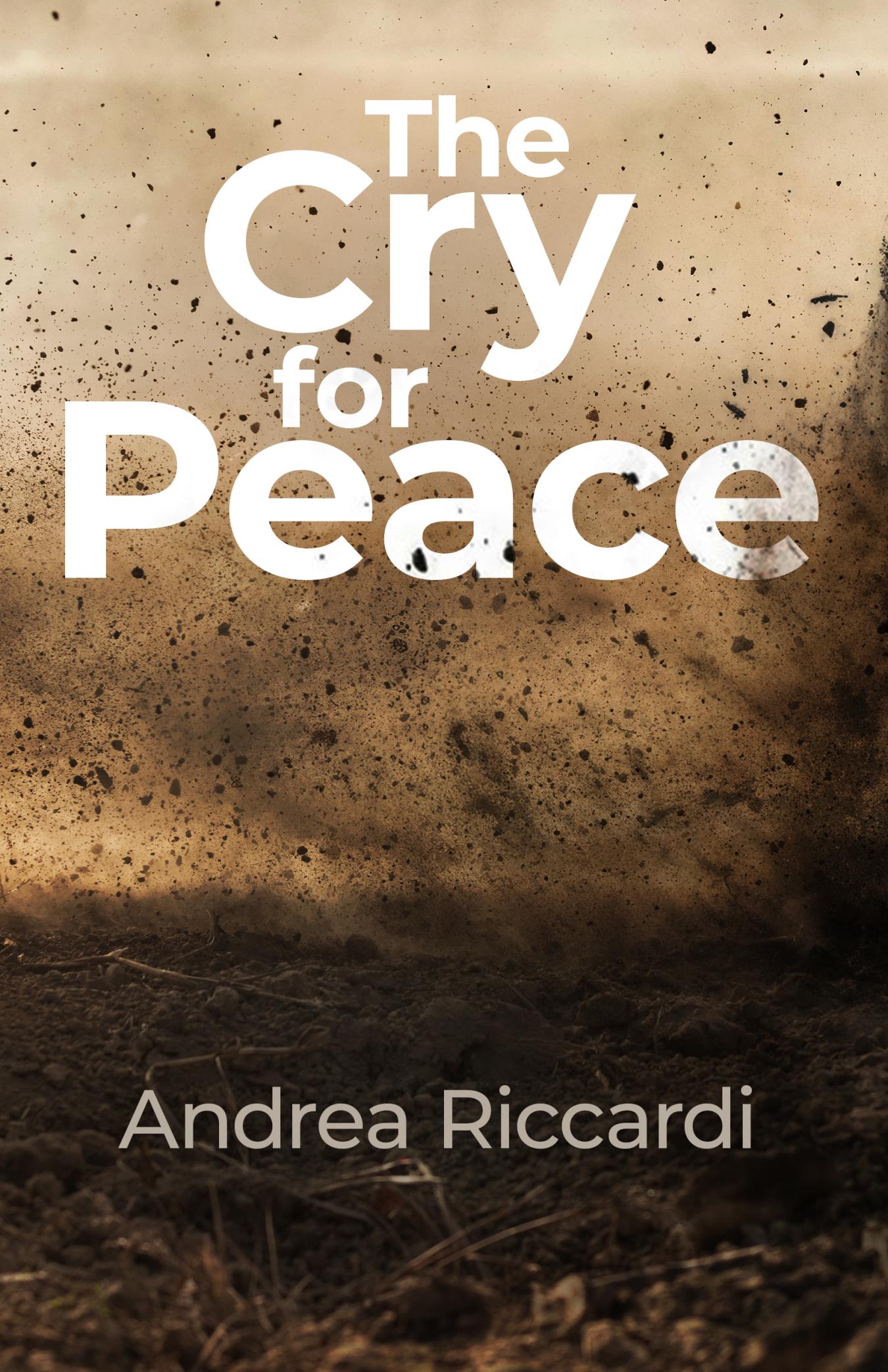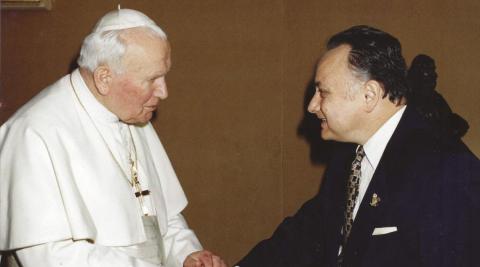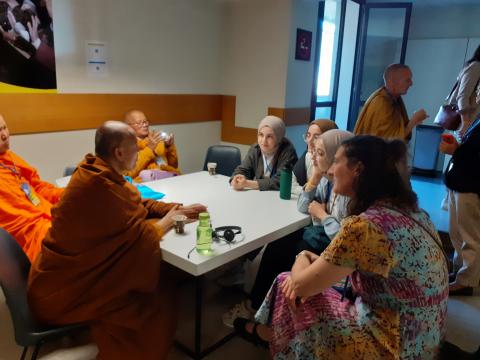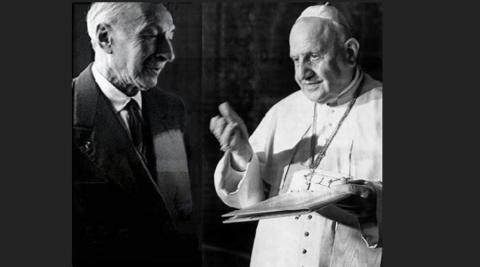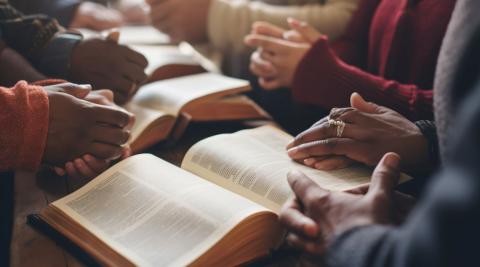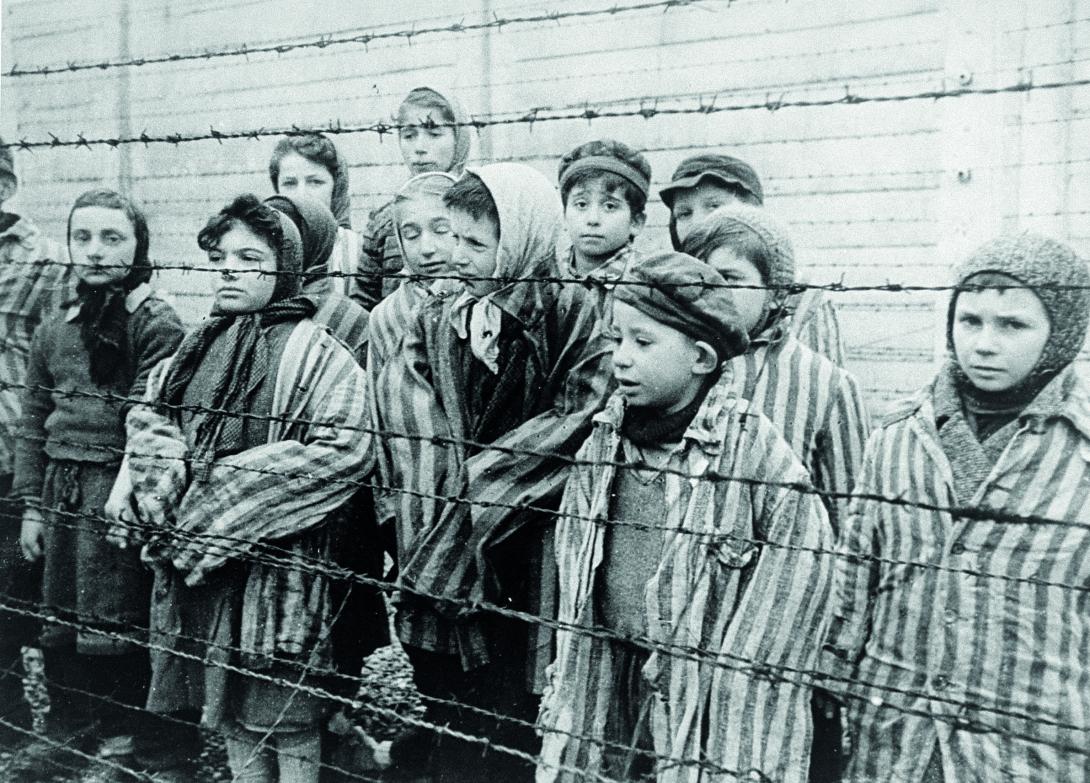
Photo by wikipedia.org
Up until recently, if you asked me what I knew about “International Holocaust Remembrance Day,” I would have said very little. I had never taken part in that observance, and I didn’t know any Catholics who had.
That has now changed. This January our Diocese of Sacramento, for the first time in its history, is planning a special event that will remember what happened to our Jewish brothers and sisters during World War II. The event will also help us Catholics learn more about the Holocaust—the greatest crime of the twentieth century—and we will ask God’s forgiveness for the role some Catholics played in that crime.
For me, this awareness began with a retreat I took some time ago in one of my favorite places, the Abbey of New Clairvaux, a Trappist monastery in Northern California. I needed something to read during those days of silence, and I brought a book along that had sparked my curiosity.
It was a diary that was written by a Jewish mystic, Etty Hillesum, who saw the persecution of the Jews in the Netherlands firsthand during the Nazi occupation there (1940–45). What she wrote in that diary riveted my attention.
When she learned one afternoon that she could not even take a walk in the park anymore, her reaction was not what most people would feel.
“And everywhere signs barring Jews from the paths and the open country,” she wrote. “But above the one narrow path still left to us stretches the sky intact… I feel free. The sky within me is as wide as the one stretching above my head.”
“The misery here is quite terrible,” she wrote from Westerbork concentration camp shortly before they killed her. “And yet late at night, when the day has slunk into the depths behind me, I often walk with a spring in my step along the barbed wire.
“And then, time and again, it soars from my heart—I can’t help it, that’s just the way it is, like some elemental force—the feeling that life is glorious and magnificent, and that one day we shall be building a whole new world.”
I have spent many hours since that retreat studying Etty’s diary (the unabridged version, plus annotations, is 800 pages long), and thinking about her heroic refusal to hate the Nazis despite the things they were doing to her people. She has become an intimate part of my life. I even find myself praying to her, frequently.
Her story has also made me more interested in Holocaust history and the unspeakable crimes that went with it. I am haunted by what Adolf Hitler did during World War II.
And I am not alone in that state of mind. Along the way, I have discovered that our retired bishop in Sacramento, William K. Weigand, has an equally profound interest in the Holocaust, although it did not come from reading Etty Hillesum. In his case it came from a traumatic experience he had in Europe many years ago.
A life-changing visit to Auschwitz
It happened in 1997, when he and a group from Sacramento went on a pilgrimage to Poland, and one of the places they visited was the Auschwitz-Birkenau Museum, site of the largest extermination camp in the Third Reich.
Bishop Weigand has been haunted ever since by what he saw in that place: the piles of eyeglasses and shoes worn by the victims on their arrival, their pieces of luggage with the name tags still readable, the bales of human hair that were intended for industrial used by the Nazi State, the wall against which prisoners were mowed down with machine guns, the lake in which the ashes of the cremated were dumped.
He found these exhibits so riveting that the following day he decided to change his plans. He broke away from the group of pilgrims and went back to spend a second day at Auschwitz, alone, as he tried to understand this “incomprehensible” crime.
True sorrow for the blood and tears
The following year, Rabbi Rueven Taff of Mosaic Law Synagogue in Sacramento invited him to speak at their Sabbath service marking the 50th anniversary of Israel. Bishop’s Weigand’s sermon that day was about the current state of Jewish-Catholic relations, but at the end he made a brief mention of his visit to Auschwitz the previous year, adding that “the enormity of the evil of the Shoah truly overwhelmed me.”
As he read those words, however, he suddenly grasped his pectoral cross and began to choke up. He had difficulty getting the words out. “As Catholic Bishop of Sacramento,” he went on, “I declare before you my profound and anguished sorrow for the ‘blood and tears’ that have been inflicted upon your people by those who were Catholics. In deep humility I ask your pardon and forgiveness.”
How many of those words the people could hear or understand Bishop Weigand does not know, because by then he was in a meltdown.
“I totally lost it,” he told me. “I couldn’t even see the page. Then I took my glasses off and fumbled in my pocket for my handkerchief so I could wipe my glasses.”
Rabbi Taff, who was sitting close by, immediately came to his aid with a box of Kleenex and placed his reassuring hand on the bishop’s shoulder, while the people in the pews also pulled out their tissues. There wasn’t a dry eye in the place.
“I will never forget that sabbath morning at our synagogue,” Rabbi Taff told me. “The silence in that sanctuary was deafening. I could feel the emotion of my congregation as they looked up at the pulpit.”
During the reception afterwards, Rabbi Taff introduced two elderly members of his congregation to the bishop: Gisela Spigel and Touba Grynbaum. Both were survivors of Auschwitz, and both had tattoos to prove it.
“I never ever expected a Catholic bishop to ask pardon and forgiveness for what some Catholics have done,” Gisela said. “I thank you from the bottom of my heart.” Both survivors gave him a hug.
Are we in danger of forgetting?
That was 25 years ago, but what happened in that synagogue has taken on a disturbing relevance for today. We are now living in an age when a shocking number of US young people question whether the Holocaust ever happened.
According to one study reported in the Guardian newspaper, nearly two-thirds of millennials and Gen Z adults (ages 18–39) were unaware that 6 million Jews died in the Holocaust. Almost a quarter (23%) said they believed the Holocaust was either a myth, or had been exaggerated, or they weren’t sure, and almost half (49%) said that they had seen Holocaust denial posts online.
General Dwight Eisenhower would turn in his grave if he heard about that. In 1945 he made a point of going to see a concentration camp for himself, and he ordered subordinates to capture the horrific scenes in graphic photographs and film for posterity. That visual evidence ended up being a critical part of the Nuremberg Trials.
On Sunday, January 17, 2016, on the occasion of his visit to the synagogue of Rome, after recalling that John Paul II had referred to the Jewish people as our elder brothers and sisters, Pope Francis said:
“The Jewish people, in its history, was subjected to violence and persecution, culminating in the extermination of Jews in Europe during the Shoah… Their suffering, their anguish, their tears, must never be forgotten. The past must serve as a lesson for us in the present and in the future.
“The Shoah teaches us to always maintain the highest level of vigilance, in order to be able to intervene immediately in defense of human dignity and peace.”
If you enjoyed this article, you might like...


